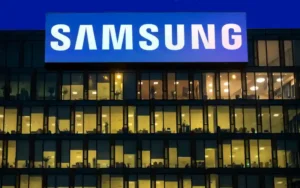Video Game Software Market Set for Significant Growth

- The video game software market is projected to grow substantially, driven by technological advancements and increased digital engagement.
- The industry’s value is expected to rise from $198.5 billion in 2021 to $751.4 billion by 2031.
- his expansion represents a compound annual growth rate of 14.4% over the decade.
- The Allied Market Research report provides a comprehensive analysis for industry stakeholders.
Market Dynamics and Segmentation
Several factors are contributing to this market expansion. The increasing demand for remote education and work-from-home models plays a significant role. Furthermore, the integration of advanced technologies like virtual reality and mixed reality into gaming experiences is a key driver. Rising internet penetration globally also supports this growth.
The market analysis segments the industry by device type, end-user, genre, and geographical region. Device types include smartphones, consoles, and PCs, among others. End-users are categorized as either personal or commercial. Genres covered in the report include action, adventure, role-playing, simulation, strategy, and sports.
Key Segments and Regional Performance
Smartphones currently lead the market in terms of device type. This segment accounted for over one-third of the global market share in 2021. Experts anticipate it will maintain its leading position and exhibit the fastest growth, with a projected CAGR of 14.9%. Action games dominate the genre segment, holding nearly a quarter of the market share.
North America held the largest share of the video game software market in 2021. The region is expected to retain its dominant position throughout the forecast period. However, the Asia-Pacific region is poised for the most rapid growth, with an anticipated CAGR of 16.2%. This growth is primarily fueled by large player bases and increasing mobile internet adoption.
Industry Players and Future Outlook
The report highlights several major players in the global video game software market. These include established companies such as Sony, Microsoft, Nintendo, Electronic Arts, and Ubisoft. Additionally, mobile gaming giants like Apple and Tencent are significant contributors. The market also sees contributions from newer studios, reflecting a dynamic competitive landscape.
The competitive intensity is increasing, particularly with advancements in VR, MR, and AI-driven game mechanics. These technological innovations are expected to shape the future of the industry. The geographic diversification of the video game sector is also becoming more apparent, driven by the global integration of development, competitive events, and community platforms.
A noteworthy trend not explicitly detailed in the press release but relevant to the gaming market’s future is the growing adoption of cloud gaming services. Platforms like Xbox Cloud Gaming, GeForce Now, and Amazon Luna allow users to stream games without powerful local hardware, potentially expanding the market to an even broader audience and impacting traditional device-based segmentation. This development could further accelerate the market’s growth, particularly in regions with robust internet infrastructure.









